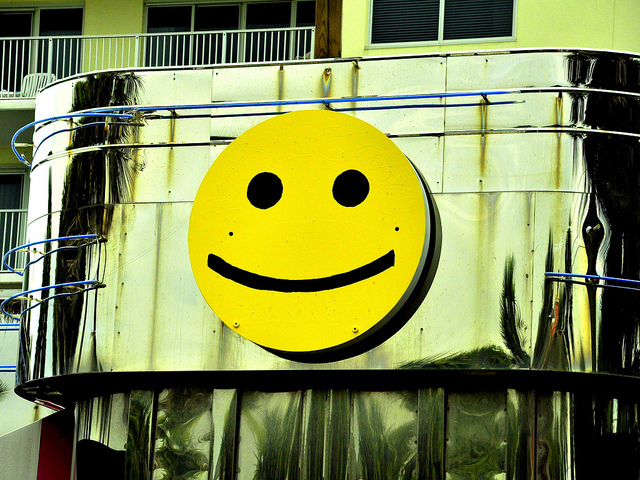A few years ago, on one of my many moves out of an apartment, I came across diaries that my Nana had written when she was in her 20s.
I sat down to read the few first pages and hours later, I found myself still reading. In one of the many cameo style stories she had written, she describes the rainy night that she went to see Norman Vincent Peale speak with the man she was dating who later became my grandfather.
She says “I just can’t see what he was so happy about, smiling and everything was so great. All I could see were dark clouds and feel the cold dampness of a wet rain. I was trying to be happy, trying to feel the positive energy he was so enthusiastically trying to spread on the crowd, but all I wanted to do was to be home in pajamas with a hot cup of tea.”
The year was 1938, when Norman Vincent Peale started spreading his theory on the power of positive thinking. His theory was to uplift and motivate people by seeing the goodness in the situation, but an overly zealous approach to positive thinking in some situations may not seem authentic.
I get what Peale and many others are trying to say about the importance of taking an optimistic outlook, but there is a whole broad spectrum of emotions that we overlook between being positive and an “all will fail” attitude. It is this middle ground that is most important.
When we act, or make a decision, we don’t want emotions to play a role. It clouds our judgement. The best decisions are made when we are feeling centered—not overly optimistic or overly pessimistic. In fact we are operating from a place of what needs to be done, not what do I want to do because it feels good.
Basing decisions on what feels good is quite dangerous—it can lead to impulsivity, short thinking and addiction. Whereas this middle ground, this centered approach is based in logic and reason. It draws from our intuition and doesn’t say what would I like, it says what is the most important thing I need to do now. We don’t worry about the outcome, we just do what needs to be done now.
If we get too caught up in our actions leading to a positive outcome, we get distracted in the moment. In some cases getting side tracked for even just a second can cost us a lot—leading to accidents, missing the winning play, or overlooking an opportunity.
Sure we all want good things to happen, but the way to create goodness is to just keep doing and listening to our intuition not following a “what feels good” approach.
Knowing what is best—that is intuition. It is acting from our first thought, going with it, and not setting expectations. Nature gave us a variety of emotions for good reason: so we would know when something is wrong. Emotions are like sensors—they help us identify when something is out of balance and then enable us to adapt. When we ignore our emotions or pay too much attention to them, we become out of balance.
And that is what thinking positively does all the time. It teaches us that the other emotions like fear, sadness, disappointment, frustration and anger are not important. As long as we are happy all will be well and fine.
But what if, like my Nana, that day we don’t want to feel joyous? We feel out of sorts and just want to go home to sit in bed—what is wrong with that? Nothing. But if we are told to feel positive all the time, we reject an important part of ourselves: our intuition.
Author: Jane CoCo Cowles
Editor: Catherine Monkman
Photo: Mario/Flickr







Read 5 comments and reply